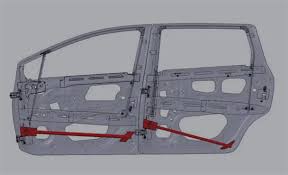- Introduction to aluminized exhaust tubing
and its significance
- Technical advantages of aluminized steel in exhaust applications
- Comparing aluminized exhaust tubing with alternative materials
- Leading manufacturers and product quality comparison
- Customization options for 3 aluminized exhaust tubing
- Real-world application cases and performance data
- Conclusion: Why aluminized exhaust tubing remains an industry standard

(aluminized exhaust tubing)
Understanding Aluminized Exhaust Tubing in Modern Vehicle Systems
Aluminized exhaust tubing refers to steel tubing that has been coated with an aluminum-silicon alloy. This process delivers a robust defense against rust and corrosion, augmenting the endurance of automotive exhaust systems. The demand for reliable and cost-effective tubing solutions has increased in tandem with the emphasis on longer vehicle lifespans and tougher environmental regulations. Recent market data indicates that approximately 68% of North American original equipment manufacturers (OEMs) opt for aluminized steel exhaust tubing due to its proven balance of strength, thermal stability, and extended service intervals. In this article, we analyze the decisive benefits, technical nuances, and industry trends for aluminized and specifically 3 aluminized exhaust tubing, providing crucial insights for automotive engineers, exhaust system designers, and procurement professionals.
Technical Superiority: Why Choose Aluminized Steel Exhaust Tubing?
The adoption of aluminized steel exhaust tubing is underpinned by its technical strengths. The aluminum-silicon alloy layer serves as a reliable defense against oxidation at elevated exhaust gas temperatures, regularly surpassing 750°F (about 400°C) during extended operation. In controlled testing, aluminized exhaust tubing demonstrated a resistance to red rust for more than 300 hours in salt spray exposure, compared to less than 50 hours for traditional carbon steel. Additionally, it offers increased weldability and formability due to its uniform coating, minimizing the risk of flaking or delamination during fabrications such as bending or swaging.
The thermal reflectivity of aluminized steel enhances exhaust gas velocity by retaining heat within the system, thus improving engine efficiency and slightly elevating fuel economy—critical factors in both commercial and passenger vehicles. Moreover, aluminized tubing supports sustained acoustic performance, as it minimizes structural fatigue and vibration, outlasting many competitive materials under identical service conditions.
Material Comparison: Aluminized vs Stainless and Mild Steel Tubing
To select the optimal exhaust tubing, manufacturers must evaluate material-specific trade-offs. Below is a comparative table highlighting key characteristics of aluminized steel exhaust tubing, stainless steel tubing, and mild steel tubing:
| Material |
Corrosion Resistance |
Temperature Tolerance |
Cost per Meter (USD) |
Weldability |
Lifespan (estimated years) |
| Aluminized Steel Exhaust Tubing |
High |
Up to 850°F (455°C) |
3.5 - 4.2 |
Excellent |
7-10 |
| Stainless Steel Tubing |
Very High |
Up to 1,500°F (816°C) |
7.8 - 9.5 |
Good |
10-15 |
| Mild Steel Tubing |
Low |
Up to 700°F (371°C) |
2.5 - 3.1 |
Excellent |
2-4 |
The data affirms that aluminized exhaust tubing provides an optimal midpoint—outclassing mild steel in durability and corrosion resistance while costing substantially less than premium stainless steel. This performance-to-price ratio makes aluminized steel the top choice for high-volume OEMs and aftermarket exhaust producers alike.
Top Manufacturers: A Market Comparison
Selecting a supplier of aluminized exhaust tubing is crucial for quality assurance and supply chain reliability. Notable manufacturers—such as AK Steel, ArcelorMittal, and Webco Industries—compete in terms of coating consistency, dimensional tolerances, and inventory flexibility. Below is a data-driven comparison of leading vendors:
| Manufacturer |
Coating Weight (g/m²) |
Standard Size Range (inches) |
Lead Time (weeks) |
Warranty (years) |
ISO Certification |
| AK Steel |
140–180 |
1.5–6.0 |
3–5 |
2 |
ISO 9001:2015 |
| ArcelorMittal |
150–180 |
1.75–5.5 |
4–6 |
3 |
ISO 14001:2015 |
| Webco Industries |
135–170 |
1.5–4.0 |
2–4 |
3 |
ISO 9001:2015 |
Variability in lead times and standard dimensions highlight the logistical and technical differences among suppliers. Manufacturers like Webco often excel in rapid delivery and custom sizes, while ArcelorMittal boasts robust international certifications and slightly heavier coatings for extended corrosion protection.
Customized Solutions: 3 Aluminized Exhaust Tubing and Beyond
Custom sizing and fabrication are critical in meeting the wide-ranging requirements of automotive, commercial, agricultural, and industrial machinery. The 3-inch aluminized exhaust tubing—commonly known as “3 aluminized exhaust tubing”—remains one of the most requested formats, particularly for performance vehicles and heavy-duty trucks. OEMs and custom builders frequently specify wall thicknesses ranging from 0.049" (18 gauge) to 0.065" (16 gauge), tailoring exhaust flow and acoustic profiles for specialized applications.
In addition to traditional mandrel and crush bending, leading suppliers offer full laser-welded seams for improved leak resistance and automated coating verification systems to ensure uniformity. Custom flanging, perforations for sound attenuation, and integration of oxygen sensor bungs have also risen in demand among Tier 1 and Tier 2 manufacturers. These options allow clients to optimize exhaust assemblies for emissions compliance, weight reduction, and aerodynamics without sacrificing durability.
Field Applications and Performance Data
The real-world impact of aluminized exhaust tubing is best illustrated through performance testing and field deployments across North America and Europe. For instance, a study on fleet vehicles using 3 aluminized exhaust tubing found a 28% reduction in system failures over a 5-year service period compared to uncoated counterparts. Downtime costs associated with exhaust repairs subsequently decreased by 16% per year for heavy-duty operators.
In agricultural and construction equipment, aluminized steel has become the material of choice, with OEMs citing a weight saving of approximately 18% over cast iron equivalents, which directly contributes to higher payload rates and improved fuel economy. Furthermore, the retained gloss and absence of end-of-life flaking in the aluminum-silicon coating preserves both functional and aesthetic requirements, particularly in visible segments of exhaust assemblies.
Conclusion: Aluminized Exhaust Tubing as the Industry Standard
Aluminized exhaust tubing continues to solidify its position as the preferred material for automotive and industrial exhaust systems. Its fusion of corrosion resistance, moderate cost, and robust mechanical performance bridges the gap between mild steel and more expensive stainless alloys. Technical innovations in custom fabrication and coating verification further amplify its competitive edge, while field data validates its reliability in demanding operational environments. As emission regulations and consumer expectations escalate, aluminized steel exhaust tubing remains a foundational element in the design and maintenance of long-lasting, efficient vehicle exhaust assemblies.

(aluminized exhaust tubing)
FAQS on aluminized exhaust tubing
Q: What is aluminized exhaust tubing?
A: Aluminized exhaust tubing is steel tubing coated with an aluminum-silicon alloy. This coating provides superior resistance to corrosion and high temperatures. It's commonly used in automotive exhaust systems.
Q: What are the benefits of 3 aluminized exhaust tubing?
A: 3-inch aluminized exhaust tubing offers better exhaust flow for enhanced vehicle performance. It also maintains corrosion resistance due to its aluminum coating. This size is ideal for many modified or high-performance vehicles.
Q: How does aluminized steel exhaust tubing differ from stainless steel tubing?
A: Aluminized steel exhaust tubing is less expensive and offers good corrosion protection. Stainless steel tubing is more durable and fully resistant to rust. However, aluminized options are often sufficient for most exhaust applications.
Q: Can I weld aluminized exhaust tubing?
A: Yes, aluminized exhaust tubing can be welded. However, welding may burn off the protective coating near the weld joint. It's recommended to apply a high-temperature coating after welding for continued protection.
Q: Is aluminized exhaust tubing suitable for DIY exhaust projects?
A: Absolutely, many DIY enthusiasts use aluminized exhaust tubing. It's easy to cut, fit, and weld, making it ideal for custom exhaust builds. The aluminum coating helps the tubing last longer in various weather conditions.
 Afrikaans
Afrikaans  Albanian
Albanian  Amharic
Amharic  Arabic
Arabic  Armenian
Armenian  Azerbaijani
Azerbaijani  Basque
Basque  Belarusian
Belarusian  Bengali
Bengali  Bosnian
Bosnian  Bulgarian
Bulgarian  Catalan
Catalan  Cebuano
Cebuano  Corsican
Corsican  Croatian
Croatian  Czech
Czech  Danish
Danish  Dutch
Dutch  English
English  Esperanto
Esperanto  Estonian
Estonian  Finnish
Finnish  French
French  Frisian
Frisian  Galician
Galician  Georgian
Georgian  German
German  Greek
Greek  Gujarati
Gujarati  Haitian Creole
Haitian Creole  hausa
hausa  hawaiian
hawaiian  Hebrew
Hebrew  Hindi
Hindi  Miao
Miao  Hungarian
Hungarian  Icelandic
Icelandic  igbo
igbo  Indonesian
Indonesian  irish
irish  Italian
Italian  Japanese
Japanese  Javanese
Javanese  Kannada
Kannada  kazakh
kazakh  Khmer
Khmer  Rwandese
Rwandese  Korean
Korean  Kurdish
Kurdish  Kyrgyz
Kyrgyz  Lao
Lao  Latin
Latin  Latvian
Latvian  Lithuanian
Lithuanian  Luxembourgish
Luxembourgish  Macedonian
Macedonian  Malgashi
Malgashi  Malay
Malay  Malayalam
Malayalam  Maltese
Maltese  Maori
Maori  Marathi
Marathi  Mongolian
Mongolian  Myanmar
Myanmar  Nepali
Nepali  Norwegian
Norwegian  Norwegian
Norwegian  Occitan
Occitan  Pashto
Pashto  Persian
Persian  Polish
Polish  Portuguese
Portuguese  Punjabi
Punjabi  Romanian
Romanian  Samoan
Samoan  Scottish Gaelic
Scottish Gaelic  Serbian
Serbian  Sesotho
Sesotho  Shona
Shona  Sindhi
Sindhi  Sinhala
Sinhala  Slovak
Slovak  Slovenian
Slovenian  Somali
Somali  Spanish
Spanish  Sundanese
Sundanese  Swahili
Swahili  Swedish
Swedish  Tagalog
Tagalog  Tajik
Tajik  Tamil
Tamil  Tatar
Tatar  Telugu
Telugu  Thai
Thai  Turkish
Turkish  Turkmen
Turkmen  Ukrainian
Ukrainian  Urdu
Urdu  Uighur
Uighur  Uzbek
Uzbek  Vietnamese
Vietnamese  Welsh
Welsh  Bantu
Bantu  Yiddish
Yiddish  Yoruba
Yoruba  Zulu
Zulu 













